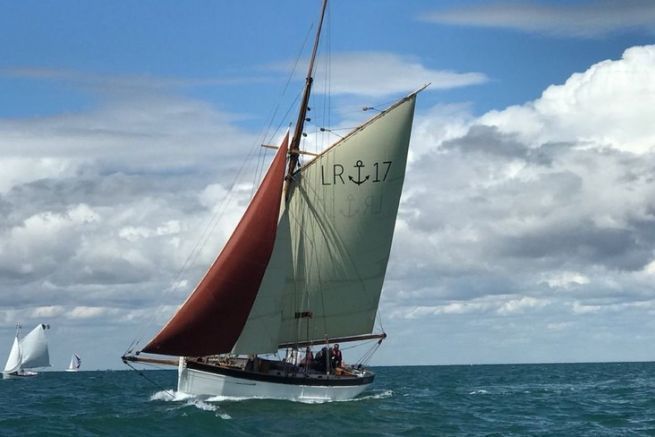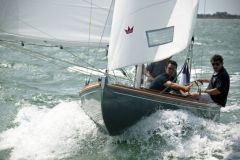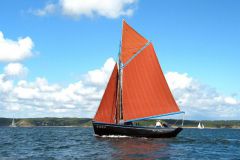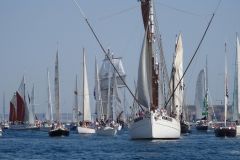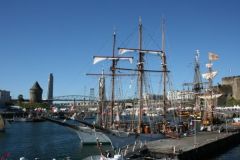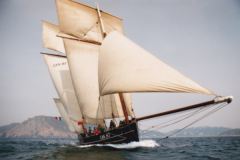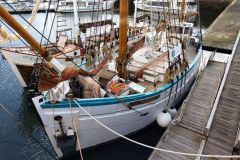Pilot cutters are sailboats designed to go ahead of merchant ships and guide them to port. In the 19th and 20th century, to "serve a ship", you had to arrive first. That's why these pilots had to be fast. In addition, due to the lack of modern communication means, pilots often waited several days for ships to arrive. So they had to hold the cape perfectly. These performances made them good regatta boats, and some of them stood out on the races run at the time.
Fine water inlets and little drag
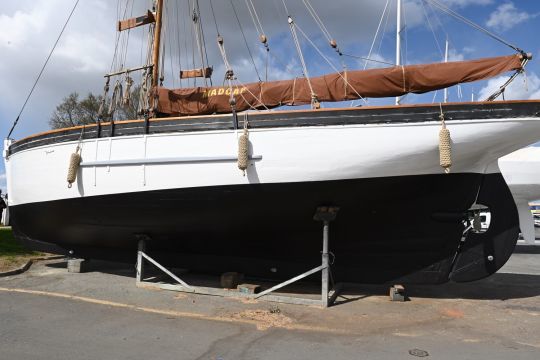
These sailboats were designed without a plan, from hand-hewn half-hulls, and were recognized by a straight bow topped by a bowsprit and a large sail area. The length of the hull in the 19th century varied around 15 m, even if with time, the need for speed being felt in particular to follow the steamers, some pilots saw their length increase.
Refractory sailors
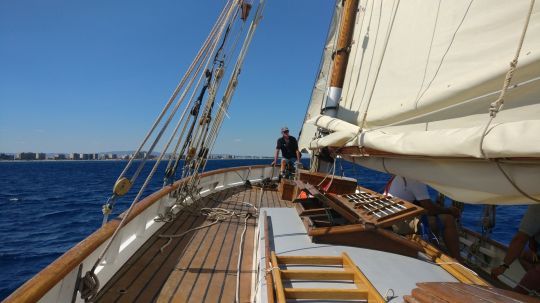
Madcap was built in 1874, it is the oldest sailing pilot cutter, still original. Indeed, there are some replicas of older models, but they are only copies. She was built in the Scilly area in the Pellew shipyard, to be used in Bristol, an area where the tidal range is huge, up to 14 m, where the westerly wind enters this open bay and the sea is quickly choppy. You definitely had to know how to sail to get into these waters. Each commercial port that welcomed merchant ships had its own fleet of pilots. A fleet that was neither regulated nor regularized, whose sailors were said to have little appreciation for orders and disciplineâeuros¦
Three men at the helm
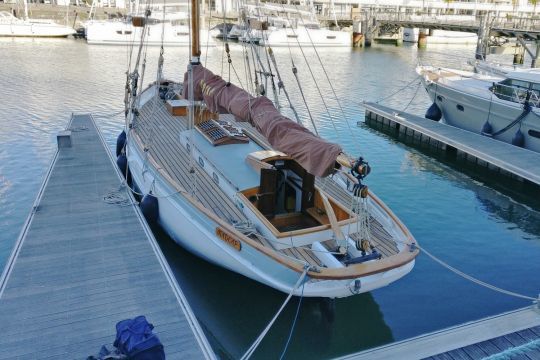
At that time, the pilot cutters were led by a crew of three people. On board, there was the sailor who remained at the helm, the ship's boy who was in charge of maneuvering and the pilot who was in charge of boarding the merchant ship. To reach the ship, the ship's boy launched a rowboat and rowed with the pilot on board.
Strongly woven
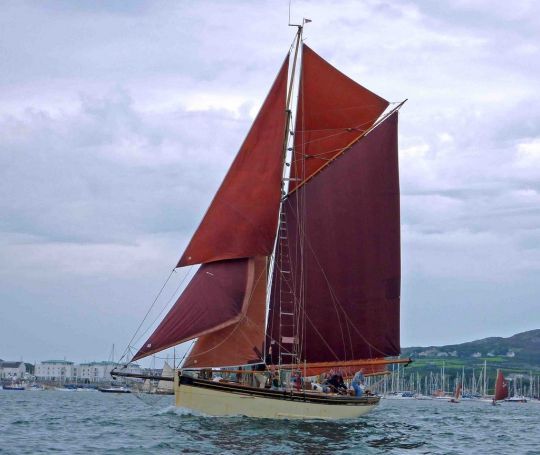
As for the sails, the pilots most often have a mainsail with horn and 3 jibs: a staysail with 3 reefs - the all-purpose sail -, a jib and a clinch jib, both on the 1.50 m bowsprit. A jib sail brings the sail area to about 130 m². If the crew has already sailed Madcap at a maximum speed of 12 knots in strong winds, its cruising speed is around 5 to 6 knots with 15 knots of wind. The most impressive thing is her balance under sail, once well adjusted, Madcap remains very neutral at the helm.
If the boat weighs 24 tons, it is partly due to the oversize of the wooden structure: we are in the presence of a work boat subjected to harsh conditions. A concrete ballast is also poured in the bottom.
The interior fittings are quite minimal, just to allow the crew to protect themselves a little, but also to leave the deck clear to store and launch the canoe.
A French renovation
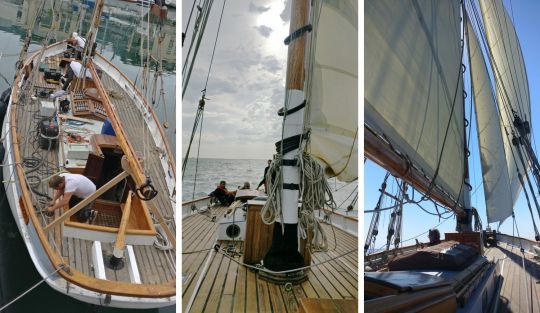
Madcap was bought from the English to go to La Rochelle. There, in the port of La Pallice, she underwent a thorough renovation to restore her to her original state. She lost her steering wheel to find a tiller, as originally, and her 45 mm elm hull was thoroughly revised. To be noted, the presence of the engine, added in 1936, which now helps with port maneuvers.
Now Mediterranean
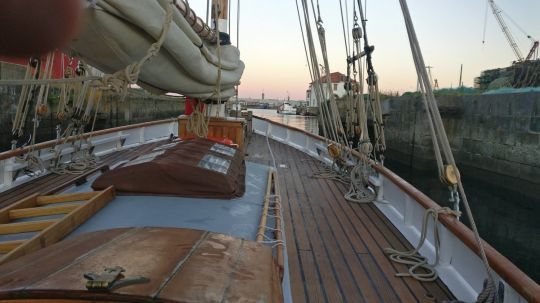
Having changed hands, Madcap now sails in the Mediterranean with Canet-en-Roussillon as home port. Sailing on board is done without any help, neither winch nor other assistance. You have to pull on the hoists to hold the helm firmly and enjoy the pleasure of sailing in the old way. The Madcap 1874 Association, which is now in charge of the sailboat, would like to use it to promote exchanges by making people discover traditional sailing through outings, but also through the maintenance of the sailboat.
Madcap will be present on all the Mediterranean classics, starting with the Voiles de Saint-Tropez in September 2022.
